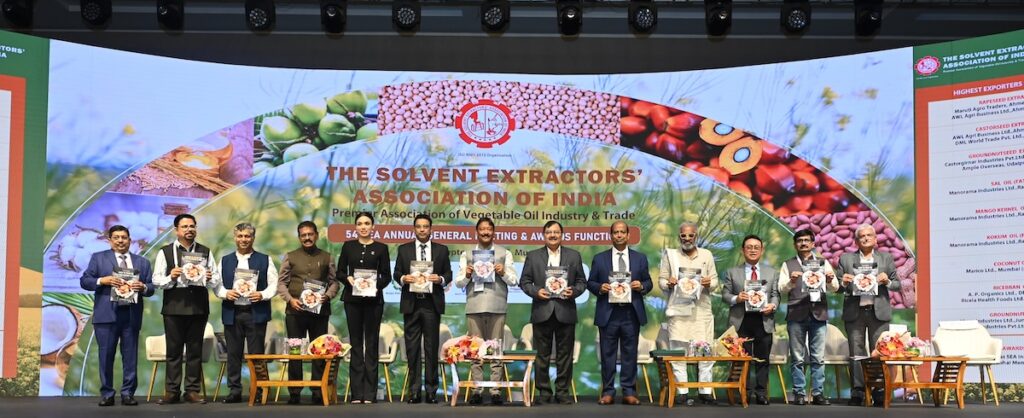To achieve the goal of self-sufficiency, the white paper Charting the Path to Palm Oil Self-Sufficiency in India suggests a five-point action plan. It includes:
- Targeting high-potential areas: Expand the coverage of the National Mission on Edible Oils Oil Palm (NMEO-OP) while simultaneously strengthening irrigation infrastructure and providing targeted support for rainfed regions, with a special focus on Northeast India.
- Repurposing low-return lands: Approximately 16.08 million hectares (mha) of marginal rice growing areas, identified as suitable for oil palm cultivation, can be utilized to enhance yields and overall returns.
- Enhancing productivity and efficiency in oil palm cultivation: A focused strategy is required to improve yields from the current 2.4 metric tonnes per hectare to 4-5 metric tonnes per hectare through the adoption of high quality planting material, improved agronomic practices and timely access to critical inputs.
- Creating an enabling ecosystem for oil palm cultivation: Strategic investments in rural road connectivity, fresh fruit bunch (FFB) collection systems, and processing facilities are required, particularly in the Northeastern states of India where infrastructure gaps remain a major constraint.
- Catalyzing private sector partnerships: In India, private players already play a pivotal role owning 69 of the country’s 82 seed nurseries and operating 26 of the 32 processing mills. Strengthening public-private partnerships under the NMEO-OP, enabling investments in new nurseries, expanding processing capacity and supporting technology transfer can significantly boost production while improving market access for farmers.
A 40 MILLION-METRIC TONNE SUPPLY GAP
India, the world’s largest importer of palm oil, sourced 8.9 million metric tonnes (mmt) in 2023—accounting for 21% of the global imports—while the domestic output met less than 5% of the demand. With the projected vegetable oil demand reaching 66.8 mmt by 2047, driven by rising incomes, urbanization and growing reliance on processed and packaged foods, India could be staring at a 40 mmt supply gap if production lags.
“Among vegetable oils, palm oil stands out for its affordability, versatility, and critical role in meeting both nutritional and industrial needs.”
Dr B.V. Mehta, Executive Director, SEA and Secretary General, APOA
Speaking at the launch of the white paper in Mumbai, India, on 24 September, Dr B.V. Mehta, Executive Director, SEA and Secretary General, APOA said: “India’s pursuit of self-sufficiency in edible oils is both a national imperative and a collective responsibility. Among vegetable oils, palm oil stands out for its affordability, versatility, and critical role in meeting both nutritional and industrial needs. Yet, domestic production of palm oil fulfills only a small fraction of our demand, leaving the nation heavily dependent on its import.”

PALM: A CLIMATE-SMART OILSEED OPTION
The white paper Charting the Path to Palm Oil Self-Sufficiency in India highlights the potential of oil palm across critical pathways.
Economic resilience: Oil palm is a highly profitable crop, delivering a Benefit-Cost Ratio (BCR) of 1.49, compared to 1.03 for rice and 1.13 for cotton. In Indian states, like Andhra Pradesh, transitioning from low-return crop cycles, such as rice-rice, rice-maize, and groundnut-based systems to oil palm can boost farmer profits by INR 30,000 to INR 1,50,000 per hectare per year.
Multi-sectoral growth: An expanded palm oil value chain is projected to create an additional cumulative output of INR 15 trillion (143.6 billion euros approx.) by 2047, creating an estimated 690,000 new employment opportunities per year. These multi-sectoral opportunities hold potential to empower rural households, enhance livelihood security and drive regional economic development.
Environmental benefits: Palm oil’s high yield per hectare translates into lower emissions per unit of oil compared to soybean, sunflower, and rapeseed oils. When cultivated on non-peatland areas — as is the case in India — emissions are among the lowest globally at 1.44 kg CO₂ per kg of oil, versus 3.45 kg for soybean and 3.32 kg for sunflower. With better land-use planning and the adoption of POME (Palm Oil Mill Effluent) methane-capture technologies, India can further minimize emissions, positioning palm oil as a climate-smart oilseed option.
Food security: Palm oil plays a vital role in food security, particularly in developing economies. Studies from Indonesia and Costa Rica show that switching to oil palm cultivation increased household calorie intake by 13% and improved access to nutritious foods.
A BET ON HOME-GROWN INNOVATION
The key recommendations made by the the white paper are:
- Strengthen research via regional Indian Institute of Oil Palm Research (IIOPR) centers,
- Embed the India Palm Oil Sustainability (IPOS) framework into the National Mission on Edible Oils – Oil Palm to mandate responsible production practices, traceability and certification,
- Adopt regenerative agriculture and integration of similar certification and practice-based models in India to help improve soil health, strengthen ecosystem services, build climate resilience and secure long-term crop profitability while contributing to the social and economic well-being of farming communities and workers,
- Encourage public-private partnerships to accelerate investments in nurseries, mills, and Centres of Excellence (CoEs) for training, input distribution, and mechanization services
- The successful integration of smallholder farmers into value chains is critical. Prioritize access to affordable credit, secure land rights and dedicated advisory services.
“India’s push for palm oil self-sufficiency is not just about economic resilience—it’s a bet on home-grown innovation that can transform rural livelihoods and secure food security for billions.”
Shatadru Chattopadhyay, Managing Director, Solidaridad Asia
APOA chairperson Atul Chaturvedi said: “A self-reliant India is critical for the development of the region. The white paper illustrates strong evidence of South-South cooperation, especially on key learnings from Indonesia and Malaysia on predictable returns and inclusive growth for palm smallholders.”

